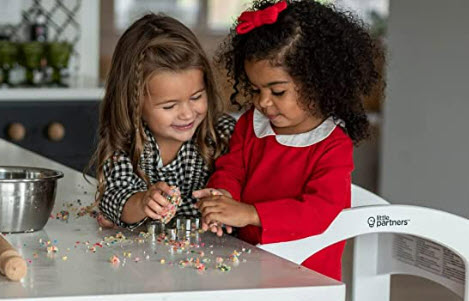WARNING:
Your abuser may monitor your internet use and may be able to view your computer activity. If you have reason to believe that your computer is not secure, you may wish to use a computer in another location to which your abuser does not have access.
What can you do if someone you know is experiencing domestic or dating violence?
Domestic violence is a pattern of abusive behaviors that adults use to maintain power and control over their intimate partners, or former partners. People who abuse their partners use a variety of tactics to coerce, intimidate, threaten and frighten their victims. Coercive control is a term often used to describe how an abuser purposely diminishes their partner’s freedoms as a way to strengthen their authority by withholding resources and taking away the survivor’s rights and liberties.
The abuse often includes:
- Physical violence
- Sexual violence
- Emotional abuse
- Economic abuse
- Isolation
- Pet abuse
- Threats relating to children
- A variety of other behaviors meant to increase fear
- Intimidation and power over the victim
Phone
TEL: 1-800-500-1119
TDD:1-800-621-4202
TTY: 711 or 1-800-955-8771
Hotline services are also provided in English, Spanish, and Creole.
Safety Considerations
If you are experiencing domestic violence, you may want to consider developing a safety plan.
Things to consider:
- What strategies or actions have worked in the past to keep safe? Will they work in your current situation?
- Is there someone you can go if you need to escape quickly?
- Is it safe to involve the police or a trusted friend?
- Is it possible you are being followed, stalked or tracked through your mobile device or social media accounts? Consider having your phone examined if you think that is the case.
- Do you have an emergency bag of important papers, emergency supplies and finances if you need to leave in a hurry?
- Have you talked about your plan with anyone? Who is safe to share your ideas with?
- Have you called a domestic violence hotline to talk with someone who understands domestic violence and can help you come up with your plan and provide resources?
If children are involved, consider their safety as well:
- Pack a bag for children that includes a change of clothing, a stuffed animal, diaper/wipes or items you may need for quick escape.
- Consider speaking to the school about safety concerns.
- Talk to the children about technology safety when using devices that can be tracked. For example, making sure all GPS is turned off any devices they may be using.
Domestic Violence Defined
Florida legally defines "domestic violence" as any assault, aggravated assault, battery, aggravated battery, sexual assault, sexual battery, stalking, aggravated stalking, kidnapping, false imprisonment, or any criminal offense resulting in physical injury or death of one family or household member by another family or household member.
Domestic violence can happen to anyone, anytime and in all kinds of families and relationships. However most domestic violence is committed by men and women are five times more likely than men to be victimized by an intimate partner. Abusers and victims/survivors represent all ages, races, religions, cultures, genders, sexual orientations, marital status and economic status. The violence abusers perpetrate is a public health concern, effecting workplaces, health care, educational systems, social services, child welfare, and criminal justice systems.
Abusers cause harm to their children who may see or hear the abuse being committed or directly experience harm, injury, or abuse that is intentional, inadvertent, or during a child’s attempt to protect the non-abusive parent or caregiver who is being abused. Children may show signs of trauma such as higher levels of aggressive behavior, depression, and anxiety, difficulty getting along with others, and difficulty performing well in school. Not all child observers of domestic violence become batterers or tolerate abuse. Children react to their environment in different ways and age and gender are considerations in how a child is affected by the violence. The potential to heal from the effects of the abuse and enhance a families’ resilience and well-being comes from supporting the safety and well-being of the non-abusive parent or caregiver.
What is Dating Violence?
Similar to domestic violence, dating violence is a pattern of behaviors where an individual exerts power and control over their partner through fear, intimidation, and often the threat or use of violence. Dating violence can happen in person or electronically, and can include:
- Physical violence
- Sexual violence
- Emotional abuse
- Verbal abuse
Examples include:
- Physical violence: throwing objects, punching walls or doors, or threats of violence.
- Sexual violence: sexting, threatening to break up with partner if they don’t have sex, unwanted touching, or teasing.
- Emotional abuse: statements intended to cause fear or cause someone to question their value or self-worth.
- Verbal abuse: name calling, yelling, or spreading rumors.
Florida’s legal definition of dating violence means “violence between individuals who have or have had a continuing and significant relationship of a romantic or intimate nature. The dating relationship must have existed within the past six months with the expectation of affection or sexual involvement between the parties.” The partners in the relationship must have been together and involved over time. This is the definition considered by the courts when victim/survivors file a petition for a civil order of protection against their abuser for repeat violence, sexual violence or dating violence.
Is what is happening considered abuse?
Every relationship is different and domestic violence doesn't always show up in the same way for everyone. Most abusers do many different things to maintain power and control over their partner.
- Does your partner prevent you from seeing your family or friends?
- Does your partner show extreme jealousy toward your friends?
- Does your partner constantly criticize you and your abilities?
- Does your partner intimidate or threaten you?
- Does your partner hit, punch, slap, or kick you?
- If you have a gun in your home, has your partner ever threatened to use it?
- Has your partner ever prevented you from leaving the house, getting a job, or continuing your education?
- Has your partner ever destroyed things that you cared about?
- Has your partner ever forced you to have sex or forced you to engage in sex that makes you feel uncomfortable?
Help and support are available if you are concerned and want to contact an advocate who will listen and connect you to resources in your community at your request.



